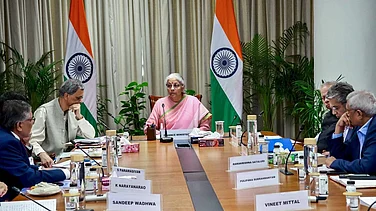Signs of struggle to counter the sentiment of a “jobs crisis” in India continue to appear even in the Modi 3.0 government. Although the Union Budget presented in July and the preceding Economic Survey directly recognised the unemployment issue, Prime Minister Narendra Modi and his Cabinet Ministers have denied the existence of such a crisis.
Almost a month before the Budget for 2025-26, Union Labour and Employment Minister Mansukh Mandaviya, who assumed charge following the BJP’s lackluster performance in the Lok Sabha elections, challenged the "jobs crisis" sentiment by citing data.
According to the data cited by Mandaviya, employment in India grew by 36 per cent to 64 crore in the last 10 years, while under the United Progressive Alliance (UPA) government; it grew by just 7 per cent. A total of additional 17.2 crore jobs have been created with 4.6 crore jobs in 2023-24 itself, he quoted.
“This is not my data but data given by the RBI (Reserve Bank of India). The RBI used to release this data even in the UPA government,” Mandaviya told reporters. The Minister referred to the RBI’s latest KLEMS database.
A Familiar Tale
Notably, Prime Minister Modi had also referred to the KLEMS database in July last year, claiming that eight crore new jobs had been created over the previous three to four years. “This figure has silenced those spreading fake narratives on jobs,” he said at an event in Mumbai.
His statement, however, was disputed when the Economic Survey was presented in Parliament a day before the Budget. The survey said that the Indian economy needs to generate nearly 78.5 lakh jobs annually in the non-farm sector until 2030 to accommodate the growing workforce.
This raised questions about the reliability of the KLEMS database.
According to the database, employment in agriculture, which declined by 16 per cent between 2004 and 2014, increased by 19 per cent between 2014 and 2023. “The data shows increase in self-employment activities, which means that people are working to survive in absence of new jobs. It is incorrect to say that these are all additional jobs created in the economy,” says Pronab Sen, former chief statistician of India.
Economists believe that the KLEMS database also includes informal labour and doesn’t truly go into the source of the job creation, making it unreliable.
Data from the Periodic Labour Force Survey (PLFS), on the other hand, shows that the share of self-employed workers in India increased from 52.2 per cent in 2017-18 to 58.4 per cent in 2023-24. In the same period, the percentage of workers with regular wages decreased from 22.8 per cent to 21.7 per cent.
The PLFS data also indicated a trend of reverse migration where the share of agriculture in employment increased from 42.5 per cent in 2018-19 to 45.8 per cent in 2022-23. This, coupled with the significant rise of gig workforce in India following the Covid-19 pandemic confirms stress in the job market, experts believe.
The Real Crisis
Modi government’s primary bet to create jobs, insiders say has been its focus on capital expenditure. The Union Budget has increased the allocation for infrastructure projects by a mammoth 333.6 per cent from Rs 2.56 lakh crore in 2014-15 to Rs 11.1 lakh crore in 2024-25.
“The focus was always to invest in infrastructure and capital. If you keep on investing in that, jobs eventually get created through a multiplier effect. In the future, we could take the current allocation up to (Rs) 15 lakh crore, which would be a sufficient amount to be invested by the Centre,” says a senior government official.
However, the plan relied on the private sector gradually taking the lead after receiving tax incentives in 2019. According to the Economic Survey, companies are neither investing at the scale needed to generate sufficient well-paying jobs nor prioritising adequate employee compensation. They cite reasons like lack of talent and would rather focus on cost-cutting to inflate profit margins.
The private sector’s reluctance to fully support the Centre in job creation has left the Modi government searching for answers that may help it effectively challenge the “jobs crisis” narrative. What remains to be seen is will the Centre continue to bet on subsidy measures like the production linked incentive (PLI) and employment linked incentive (ELI) schemes as an alternate, or look for a way out through aggressive reforms.































